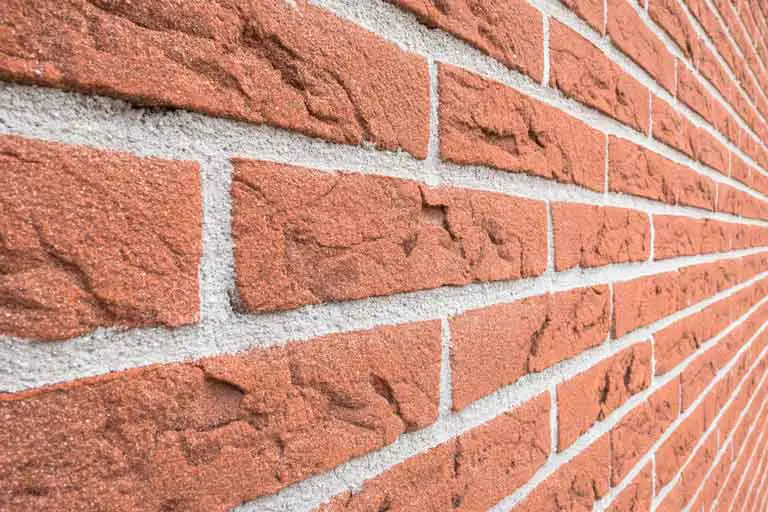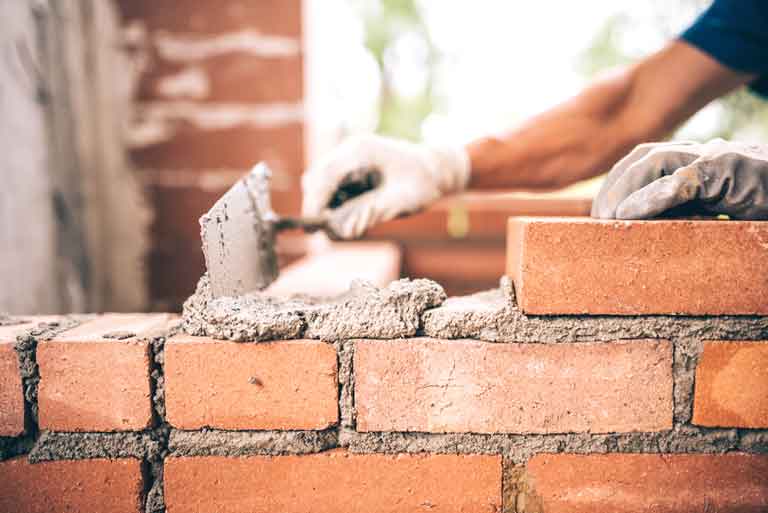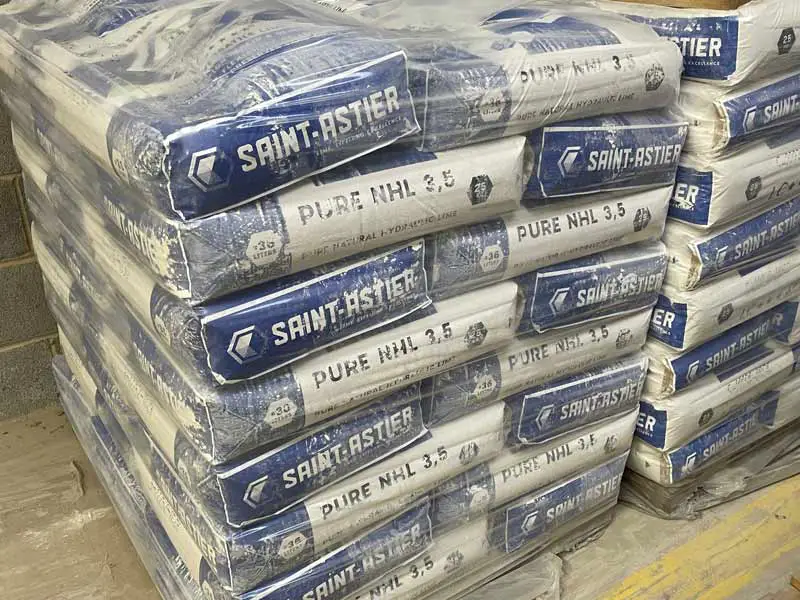
Choosing the right lime for your brickwork is vital for the longevity and appearance of your structure. Lime offers a breathable and flexible option in comparison to cement. This makes it an ideal choice for traditional and historic buildings. In this article, we will guide you through the process of selecting the best lime for your brickwork project, ensuring a successful outcome.
There are various types of lime available, each offering specific benefits. The two main categories you need to be familiar with are hydraulic and non-hydraulic lime. Hydraulic lime sets by reacting with water. In contrast, non-hydraulic lime requires exposure to air (carbonation) to set. Your choice of lime will depend on the existing masonry, the local environment, and your specific project needs.
Understanding the advantages of each type of lime and how they interact with your brickwork is essential for choosing the best material for your project. Throughout the article, we will provide you with the necessary information to make an informed decision. This helps ensure the longevity and success of your brickwork by making the appropriate lime selection.
Types of Lime Used in Brickwork
There are a few different types of lime that you can use for brickwork. Each has specific properties and advantages, so choosing the right one for your project is essential. This section will explore three main types of lime commonly used for brickwork: Hydrated Lime, Quicklime, and Hydraulic Lime.
Hydrated Lime
Hydrated Lime, also known as slaked lime or calcium hydroxide, is either a powdered lime product or wet putty (lime putty, fat lime) and is commonly used in mortar mixes.
It should be noted that although powdered hydrated lime is far more common and, therefore, easier to get hold of, it is a far inferior product when compared to proper lime putty. Powdered hydrated lime should almost never be used for making proper lime mortars. Doing so will likely cause the mortar to crumble and fail. Powdered hydrated lime is best used as a plasticising agent in combination with cement.
When using hydrated lime (lime putty) in your brickwork, it offers several benefits, such as:
- Increased plasticity: This makes it easier to shape and form the mortar, allowing for better workability.
- Enhanced vapour permeability: This allows moisture to escape from the brickwork, reducing the risk of damp and other moisture-related issues.
- Self-healing properties: Hydrated lime can help fill in any small cracks that may develop in the mortar over time, improving the brickwork’s overall durability.
- Flexibility: Due to its soft nature, mortars made with hydrated lime can accommodate small building movements without cracking and becoming brittle like cement.
However, using the correct mix ratio is essential to achieve the best results when using hydrated lime. It is typically combined with sand in a 3:1 mix ratio (three parts sand to one part lime).
Quicklime
Quicklime, or calcium oxide, is produced by heating limestone in a kiln. This type of lime can be used in the preparation of lime mortar. Before using quicklime in your brickwork, it needs to be slaked, meaning that you will have to mix it with water to create a paste called lime putty. This is how hydrated lime is made.
Lime putty, also known as fat lime and slaked lime, can then be mixed with sand to create a mortar mix. It should be noted it is not always recommended to use quicklime as the slaking process can be dangerous. Hydrated lime, specifically lime putty, is a safer and more convenient choice.
Remember that working with quicklime can be more challenging due to its highly reactive nature. It requires proper handling and safety precautions. It is also less commonly used nowadays, as it can be more challenging to source and work with than other lime types.
Quicklime and the hydrated lime produced via slaking quicklime are both types of non-hydraulic lime. This means they react with carbon dioxide in the air (carbonation) to set. Overall, this is a slower process than that of hydraulic limes, which react with water.

Hydraulic Lime
Hydraulic Lime offers a perfect balance for most brickwork applications. It comes in a range of strengths, identified as NHL (Natural Hydraulic Lime), followed by a number that indicates the strength (e.g., NHL 2, NHL 3.5, or NHL 5). The lower the number, the softer, more breathable and more flexible the mortar.
Hydraulic lime offers some benefits for brickwork, such as:
- Sets and cures underwater: This makes it suitable for damp or wet conditions.
- Increased strength: Higher-strength hydraulic lime mortars can be used for heavy load-bearing applications, whereas lower-strength mixtures are more suitable for delicate or historic brickwork.
- Resistant to cracking: This lime naturally resists shrinkage and cracking as it sets.
When mixing hydraulic lime mortar, the ratio will depend on the desired strength and the use case. A typical mix ratio with sand can range from 2.5:1 to 3:1, depending on the conditions and exposure level.
In conclusion, choosing the right type of lime for your brickwork project is essential to ensure the best results and long-lasting durability. By understanding the properties of these different types of lime and their suitability, you can make an informed decision that meets your specific needs.
Related article: Is Hydraulic or Hydrated Lime Better for Pointing?
Factors to Consider When Choosing Lime
When selecting the best lime for brickwork, there are several factors you should take into consideration. In this section, we’ll discuss three key aspects: climatic conditions, desired texture, and building age.
Climatic Conditions
Climatic conditions play a significant role in determining the ideal lime type for your brickwork. As you consider your options, consider the local weather and moisture levels to ensure the lime mortar matches the surrounding environment.
For instance, lime mortar’s breathable nature makes it a great choice in areas with varying moisture levels, as it allows water to move through the joints more easily than cement-based mortars. In sheltered areas with softer masonry, hydrated lime would be your best bet.
However, if you live in an area exposed to harsh weather, or even moderately harsh weather, hydraulic lime would be your best bet. Just keep in mind that the mortar used around masonry should NEVER be stronger than the masonry itself. This can cause severe damage to the masonry. If in doubt, speak to an expert or use a softer lime.
Desired Texture
The texture of the mortar is another important factor in your decision-making process. Lime mortar can provide a softer, more flexible finish, which is particularly suitable for older buildings or solid wall constructions. As you evaluate your options, consider the compatibility of the lime mortar with your building’s current materials and the desired aesthetic.
Additionally, different sands and aggregates can create different mortar colours, textures and strengths. You can even have existing lime mortars matched. Just look at this great selection of mortars from Limebase products.
Age of the Building
Lastly, consider the age of the building when choosing a lime product. Hydrated lime mortar is often the preferred choice for traditional or historic buildings due to its compatibility and durability. This type of mortar shares similar properties with the original building materials, preserving the structure’s integrity and appearance.
When working with an older building, selecting a lime mortar that complements its existing features and ensures its continued preservation is crucial. Using hard mortars like cement on these old buildings will cause severe damage to the soft masonry.
Unfortunately, in the UK, it’s common to see old buildings which have been “repaired” using cement mortars which are too hard. Often you’ll see brick and masonry which is cracked and blown out. Hydrated lime is usually the recommended lime for older buildings (pre-1930s).
Related article: Understanding the Strength of Lime Mortar vs Cement Mortar

The Best Limes For Each Construction Type
In this section, we’ll discuss the most suitable types of lime to use in brickwork for both new construction and historic building restoration.
New Construction
Hydraulic lime is often the preferred choice for new construction projects due to its ease of use and strength. Hydraulic lime comes in various forms, each with its properties and advantages. One such option is NHL 5 (Natural Hydraulic Lime), which provides a strong bond and can withstand harsh weather conditions.
Choosing the appropriate grade of NHL is important, as higher grades are less flexible and might not be suitable for certain constructions. You should consult an expert to determine the best type of lime for your project.
When using hydraulic lime, following the manufacturer’s guidelines is crucial to ensure the correct mixing and application. This will help avoid cracking or poor bonding with the masonry.
Historical Building Restoration
In the case of historical building restoration, it is crucial to use a lime compatible with the building’s existing materials. Non-hydraulic lime, also known as lime putty (hydrated lime), is often the preferred choice for such projects. Lime putty is more flexible and breathable, making it a better match for older, softer bricks and allowing the building to “breathe”.
When using lime putty, ensure it is delivered to the site in airtight containers to prevent it from setting prematurely. It is also essential to follow best practices for mixing and application to achieve the desired results and preserve the historical integrity of the building.
In conclusion, when selecting the best type of lime for brickwork, it’s important to consider the specific needs of your construction or restoration project. By choosing the right lime and following proper application practices, you can ensure a successful outcome for your project.
Importance of Lime in Brickwork
Enhanced Longevity of Brickwork
Using lime mortar in your brickwork is an excellent choice because it enhances the longevity of your construction. Lime is a softer material, allowing moisture to move through the joints and preventing damage from trapped moisture. Moreover, it allows the bricks to “breathe” and adapt well to movements in the structure, reducing the chances of cracks forming over time.
Efflorescence Reduction
One of the significant benefits of using lime mortar in brickwork is the reduction of efflorescence. Efflorescence refers to the white, crystalline salts that can form on the surface of brickwork when moisture evaporates, leaving dissolved salts behind. Lime mortar has a lower efflorescence risk than cement-based mortars because it allows moisture to move through the joints more easily.
Increased Mortar Workability
Lime mortar is known for its increased workability compared to cement-based mortars. This makes it easier to apply to the brickwork and allows for a smoother finishing process. The improved workability also means that the mortar is more manageable when repairs are needed, making it easier to restore older brickwork sustainably.

Conclusion
In conclusion, using lime mortar for your brickwork is a wise choice due to its moisture management, breathability, and compatibility with historic and traditional buildings. The best type of lime for brickwork is usually hydraulic lime, which can provide more flexibility and durability to the structure.
When selecting lime mortar for your project, it’s essential to consider the ratio of lime to sand. A suitable ratio would be 1 part lime to 3 parts sand for general-purpose applications. However, this ratio may vary depending on the specific needs of your project. It is always recommended to consult with a specialist to ensure the proper mix for your specific needs.
As a final note, remember that working with lime mortar requires proper protection during laying and curing. Additionally, it’s essential to employ craftsmen with the necessary experience in using lime mortars. This will help ensure the best possible result for your brickwork project.
Following these guidelines and carefully considering your options, you can confidently choose the best lime mortar for your brickwork needs. Good luck with your project!

